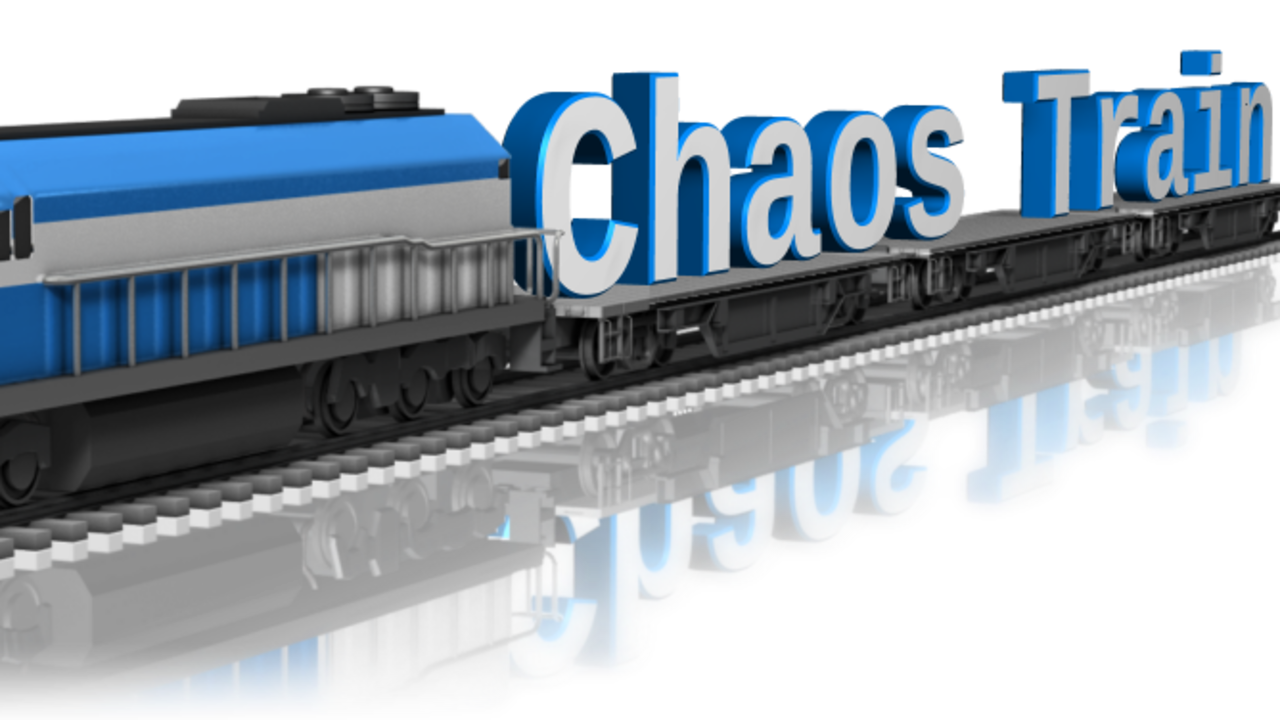The Chaos Train

An article by Eliza Burdon.
I had a client recently (Eliza) who started to talk about the experience of panic as a seemingly uncontrollable journey. I liked that idea very much and we started to call it The Chaos Train. I asked her to write an article about it as it seemed such a useful idea.
The train stops at stations on its journey to the hub. Along the way it picks up passengers and freight, (burdens to take to the hub) as each hub is reached the burdens are delivered and the result of them expressed. In the case of this particular Chaos Train they are panic, anxiety and sadness.
I think the fascinating insight Eliza had was that it all felt really chaotic and out of control. Of course it feels like that because it is panic but it is not as chaotic as it feels. The train has to stop at the stations on the way to the hub and pick up burdens otherwise there is nothing to take to the hub and nothing to be expressed. By making choices and deliberately not stopping at the stations on the route Eliza places a structure on her sense of chaos. She fights the darkness and despair and she makes a journey she wants to make not the default journey her Chaos Train may make if left to its own devices. Here is Eliza’s article.
The Chaos Train
All aboard the Chaos Train, final destination Anxiety. All change for Sadness and Depression.
Living in a continuous state of anxiety is chaotic. Panic is predictably unpredictable. We seem to have no idea of when it will strike and yet somehow it is always a certainty that it will. When the panic finally loosens its grip on us, whether that means a panic attack has passed or a stressful phase has ended, we can't find a reason for it happening in the first place. Our minds will tell us there is no reason, leading us to simply “accept” how chaotic and unpredictable our anxiety is. We lose faith in our bodies and lose sight of how we’re ever going to get better because we can't ever establish a reason for our behaviours.

As you pass through the stations you pick up baggage.
The truth is it's not all that chaotic. Anxiety and the resulting sadness and depression comes as the final culmination of a series of bad behaviours and disordered thinking. The chaos we feel we’re living in is a symptom of our anxiety taking hold of our lives, and accepting that it is that way allows it to act up if and when it pleases. Last time you did this was a Friday and today is a Tuesday? Here’s a panic attack for you. Last time you were here you wore red and now you're wearing blue? Panic attack for you. Nothing seems all that different? Have a panic attack anyway. Your anxious mind can sense any difference in a situation, and all the chaotic steps you’ve taken to allow anxiety into your life add together to produce what feels like a very unpredictable fear response to just about anything. Yet, in reality, it is entirely predictable, it's going to happen because you've accepted the idea that it's out of your own control.
The Chaos Train is the journey you take to those major hubs, Anxiety and Depression. At each stop on the way you collect more and more behaviours and beliefs that lead to full blown anxiety disorders and predictably unpredictable panic. Each one is an essential element, they work together to seize control of your mind and create chaos.
It looks a little like this, though each persons individual stops may differ.
Other stops could include inflexibility, a lack of willingness to try things out of your comfort zone or things which are not part of your usual routine will lead to anxiety and panic. Similarly being concerned that other people will judge you. Catastrophising is a major cause of both anxiety and sadness. Catastrophising means allowing your thoughts to run away from you, and believing in only the worst case scenarios. This could be that you won't be able to cope and you’ll have a panic attack, or that you'll never get better.
It's simple to build up to the “Hubs”, a series of faulty thoughts and feelings of being out of control leads to panic fairly quickly. On the other hand, breaking it back down isn't quite so easy. It's a slow moving train back to where you started. The best way to approach it is to break it down, cutting one station out at a time. For example, if you can combat catastrophising, you’re less likely to believe in the worst case scenario becoming a reality. With a little more faith, seeing events more realistically instead of living in a fantasy world where everything goes wrong, you would be opened up to a whole new level of freedom. In the same way, combating each station on the Chaos Train journey one step at a time, picking up a little less baggage at each stop, your anxiety would have so much less control over you, and in that, the chaos would dissolve.
Stay connected with news and updates!
Join our mailing list to receive the latest news and updates from our team.
Don't worry, your information will not be shared.
